Article Archive
Louis Vuitton
Au Hasard
2 July, 2018
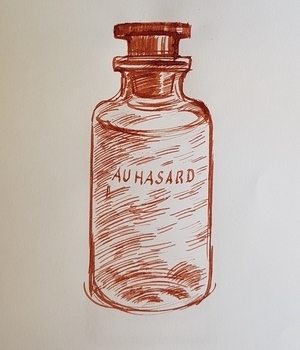 Almost alone among major luxury brands, Louis Vuitton did not have a single perfume to its name until 2016. That was the year when – after four years of rumours and the appointment, in 2011, of Jacques Cavallier as the company’s in-house perfumer – the company released seven scents in smart but simple bottles designed by Marc Newson. Floral and feminine in style, they were excellent examples of their kind.
Almost alone among major luxury brands, Louis Vuitton did not have a single perfume to its name until 2016. That was the year when – after four years of rumours and the appointment, in 2011, of Jacques Cavallier as the company’s in-house perfumer – the company released seven scents in smart but simple bottles designed by Marc Newson. Floral and feminine in style, they were excellent examples of their kind.
Two years on Vuitton and Cavallier have turned their attention to the male sex, with ‘Les Parfums’ for men – five new fragrances that, in their words, ‘pay homage to the adventurer on a quest for self-revelation’. Sensibly they’ve kept the same design for the bottles and packaging, with only subtle changes: each eau de parfum is a different pale colour, while the black magnetic bottle stoppers are stamped with the silver LV logo.
Sur la Route is Vuitton’s take on eau de cologne, with the evanescent but always refreshing scent of Calabrian lemon – specifically the zingy fruit and the bitter-fresh pulp around it – extended with a special grade of cedar and a touch of bergamot. The green note of freshly cut grass is balanced with the softer smell of Peruvian balsam which, Cavallier says, ‘includes the freshness of citrus and spicy notes of pink peppercorn and nutmeg’.
Orage uses the sexy, earthy smell of patchouli and pairs it with long-lasting top-quality iris, which adds a plush note of luxury to any scent. Though it’s not as stormy as its name suggests (or as woody as the press release describes it), Orage does have a hint of the green freshness that follows a summer downpour in the countryside.
L’Immensité has, perhaps, the most in common with the general run of men’s ‘sports’ fragrances such as Dior’s Sauvage, mainly because it has an overdose of the synthetic molecule Ambroxan. Some people love its mineral, slightly peppery note, but it reminds others of an electrical fire. Here, it’s framed by bitter grapefruit, ginger and labdanum.
For lovers of gourmand perfumes, there’s Nouveau Monde, which uses an extract of natural cocoa from the former French colony of Ivory Coast in combination with oud to create a rich and exotic scent with a touch of saffron underneath. Despite being an eau de parfum strength, it’s restrained rather than overpowering, like all the fragrances in the range.
My personal favourite, though, is Au Hazard, which takes another classic ingredient of men’s perfumery, sandalwood, using a sustainably cultivated variety from Sri Lanka. It’s a gentle, slightly spicy fragrance, with hints of cardamom and ambrette seeds, which would smell equally comfortable as a day or evening scent.
Comme des Garçons
Avignon
12 July, 2015
 Not everyone wants to smell like a Catholic cathedral in the middle of Midnight Mass, but I do. Maybe it’s because I’m not Catholic, but incense’s associations, for me, are less religious than architectural – and sensual too, since it’s one of those addictively overpowering fragrances that drive you slightly out of your mind (which of course was the original intention).
Not everyone wants to smell like a Catholic cathedral in the middle of Midnight Mass, but I do. Maybe it’s because I’m not Catholic, but incense’s associations, for me, are less religious than architectural – and sensual too, since it’s one of those addictively overpowering fragrances that drive you slightly out of your mind (which of course was the original intention).
The smell of incense is almost certainly among the oldest perfumes we have, with a history that stretches back as far as the word itself – the Latin ‘per fumum’ means ‘through smoke’. The word ‘incense’, meanwhile, derives from ‘incendere’, which also gives us ‘incendiary’ and ‘incinerator’.
Burning incense of one kind or another is common in many ancient cultures around the world, but the Catholic version began life in Africa and the Middle East. Lumps of incense have been found in the tombs of Ancient Egypt, and its main ingredients – frankincense and myrrh – still come from the Yemen, Oman and Somalia.
Recreating the burnt, resinous smell of incense in a perfume must be difficult, but in the last decade several perfumers have made the attempt, and Avignon, to my mind, is among the most convincing. It’s strong stuff, and not everyone will like it, but I love its almost narcotic intensity, with the pungent yet herbaceous smell of sun-burnt shrubs (especially cistus and santolina) on a rocky Greek mountainside. I don’t know if it’s simply the power of association, but I can even detect a hint of the slightly mouldy dampness that so many old churches smell of.
Launched in 2002, Avignon was created for Comme des Garçons by the brilliant French perfumer Bertrand Duchaufour, known for his long-standing association with L’Artisan Parfumeur. The name might seem a bit of a puzzle, until you remember that Avignon – now a beautiful if touristy walled town with tedious suburbs – was the seat of the papacy from 1309 to 1376, after the election of a French pope who refused to move to Rome. And ‘Avignon’ is surely a more evocative and intriguing name for a perfume than ‘Rome’. I, for one, am a willing convert.
Chanel
Antaeus
8 December, 2014
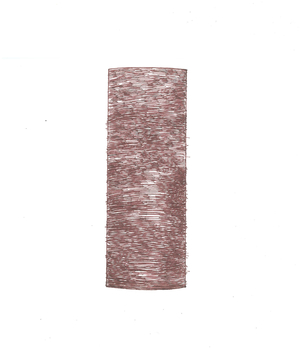 When I first started thinking about The Sniff Box, I wondered how I could make it look different from other perfume blogs. I knew I’d have no problem with the overall look, thanks to my super-talented friend, Leanda Ryan, whose design perfectly reflects the idea of ‘perfume in plain English’.
When I first started thinking about The Sniff Box, I wondered how I could make it look different from other perfume blogs. I knew I’d have no problem with the overall look, thanks to my super-talented friend, Leanda Ryan, whose design perfectly reflects the idea of ‘perfume in plain English’.
But illustrating individual perfumes is a problem, as you’ll gather if you look at other perfume sites on the interweb. The obvious thing to do is to use a ‘pack shot’, generally supplied by the brand in question: it’s what the brands like as that’s how they want you to see their scent, but how many times do you want to see the same cheesy photograph?
The trouble is, if you don’t use a photo of the bottle, what can you use instead? How do you illustrate something you can smell but can’t actually see? It’s interesting to check out what other people come up with, but given that few bloggers can afford to commission photography or illustration, they’re generally stuck with stock shots of things like perfume ingredients – a sprig of lavender, say, or a twist of lemon – which are as cheesy as the pack shots they’re trying to avoid.
It took a while, but finally it struck me: since I can draw, after a fashion, why not draw my own illustrations? And that’s how I began.
All of which is a roundabout way of saying that, when I was trying to draw my bottle of Antaeus this morning, it gradually dawned on me that it is one of the most beautiful perfume bottles I know. It’s also one of the simplest: a tall, square, black-glass container that, if you took away the classy sans-serif Chanel lettering, would bear a more-than-passing resemblance to sinister monolith in 2001: A Space Odyssey.
Designed (or at least commissioned) by Chanel’s long-standing artistic director, Jacques Helleu, and launched in 1981, Antaeus was a kind of dark-side twin to the brand’s only other men’s fragrance at that time, Pour Monsieur (launched way back in 1955). Their bottles may be almost identical in shape, but Pour Monsieur is as cool and transparent as Antaeus is brooding and mysterious, and that reflects the fact that they’re very different scents.
Pour Monsieur is a refined, impeccably discreet fragrance: perfect in its way but perhaps (dare one whisper it?) just a tiny bit dull. Antaeus, by contrast, is a dark sexy scent that was launched just as the disco era crashed and burned: the same year Ian Schrager and Steve Rubell sold out of Studio 54 and the big disease with a little name first reared its ugly head.
Antaeus (the scent) was created by Chanel’s much-fêted in-house perfumer, Jacques Polge, in collaboration with François Damachy, now head of fragrance at Dior). As suggestive as Pour Monsieur is safe, its sexiness comes from castoreum, derived from a secretion extracted from beaver wee (I kid you not), which despite its revolting origins becomes, after careful treatment, a potent perfume ingredient, with its musky, leathery smell.
It’s a warm, slightly spicy leather scent, with a lot of Mediterranean herbs, most notably clary sage and thyme, that most of us would probably associate with hot, rocky mountainsides in southern France and Greece. My nose isn’t yet sensitive enough to identify them, but it also apparently contains labdanum (derived from two different species of Cistus, another Mediterranean shrub), as well as sandalwood and patchouli, which presumably add to the slightly hippyish warmth of the scent.
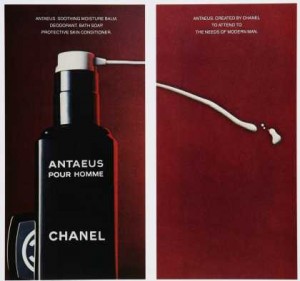 Antaeus became a big best-seller in the early 1980s initially, it seems, among gay men, and with its hints of sex and leather it’s easy to see why. Chanel itself tapped into this trend in 1983 with a delightfully pervy advert (pictured), whose subtext I can leave to your imagination.
Antaeus became a big best-seller in the early 1980s initially, it seems, among gay men, and with its hints of sex and leather it’s easy to see why. Chanel itself tapped into this trend in 1983 with a delightfully pervy advert (pictured), whose subtext I can leave to your imagination.
But gay men, as we’ve often been told, are classic early adopters, and these days Antaeus is just as likely to attract anyone who enjoys a rich and complex scent. It’s long been one of my favourites, for its warmth and easy appeal, but I love its darker origins too: sex (and history) in a bottle.
Heeley
L’Amandière
19 November, 2014
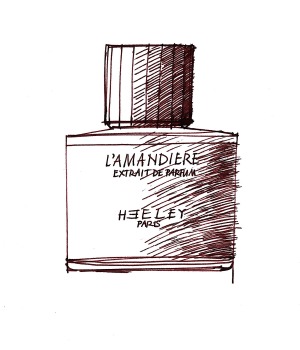
Well-heeled and well-spoken, with a passing resemblance to the young Bruce Chatwin, James Heeley is a Paris-based product designer and perfumer. We’re told that he was born in Yorkshire, studied philosophy in London and then worked as a lawyer, before moving to Paris in the late 1990s, where he changed tack again and began designing vases for star French florist Christian Tortu.
Through Tortu he met Annick Goutal, the legendary pianist turned model turned independent perfumer, which must have been an inspiring introduction to the world of perfume. Heeley describes himself as a self-taught perfumer, and though he commissioned his first few fragrances he now creates the initial olfactory compositions himself.
At £170 for a 50ml bottle of ‘Extrait de parfum’ (which you can buy online from Les Senteurs), L’Amandière is breathtakingly expensive, but at least it has the grace to look like it, coming in a bottle whose surprisingly hefty weight belies its size. Its design is crisp and simple, as you’d hope from a product designer, with a simple black label and a chunky black faceted cap.
Heeley calls his latest fragrance ‘a portrait of spring’, and adds ‘I tried to include many of the scents that my girlfriend loves (including almond) and assemble them to create an imaginary, spring orchard.’ He may have intended it as a woman’s perfume, but what you smell first is light and rather refreshing combination of almond oil and fresh-cut grass – both of which have hints of bitterness (in almond’s case) and sourness (in the case of green grass), which prevents L’Amandière coming across as too floral and girly.
It does have its floral side thanks to the pastel softness of mimosa, but because the almond scent predominates in the end its associations end up reminding one more of food than flowers – though without the cloying sweetness of other food-related fragrances like vanilla or chocolate.
On a woman I think it would smell perfectly pleasant, but on a man it’s much more interesting and unusual, which is why I’m recommending it here. It has surprisingly good staying-power too, which is a good thing given how much each spray has cost you. One for the connoisseur.
Aramis
Aramis
13 September, 2014
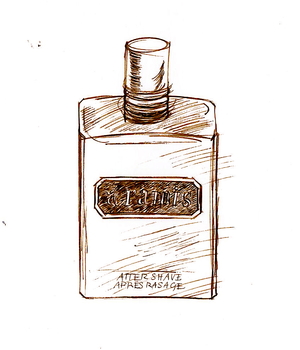 Snobbery seeps into most areas of life, including perfume, and it’s never a very attractive trait, though it’s something that most of us have been afflicted by at one time or another – at least until we learn better.
Snobbery seeps into most areas of life, including perfume, and it’s never a very attractive trait, though it’s something that most of us have been afflicted by at one time or another – at least until we learn better.
As our knowledge of perfume grows, a lot of us get a bit embarrassed about the mass-market fragrances we might once have liked. In some cases that’s fair enough: I don’t imagine that, if I went back and smelled the M&S aftershave I was given for a teenage birthday, I would think ‘wow, what a fantastic example of the perfumer’s art’. On the other hand, by turning our backs on popular perfumes we risk throwing out the Brut with the bathwater.
Aramis illustrates this danger very well. It might have been around as long as anyone can remember. It might (at least until fairly recently) have been as cheap as chips. It might not have come in the most stylish bottle, or the most alluring packaging. Yet it’s actually a wonderful, sexy, high-quality fragrance, which deserves its place on any perfume-lover’s (cool, dark) shelf.
Aramis was launched in 1964, the same year as the original Brut for Men. The first perfume in Estée Lauder’s all-male range of fragrances and skincare, it came to Britain in 1965, and at first was sold exclusively in Harrods – which just shows you images can change.
It was created by one of the finest perfumers of the time, Bernard Chant, who worked for the perfume multinational, International Flavors and Fragrances (IFF), and died in 1987. Chant made his name with the women’s perfume, Cabochard, which was launched in 1959. Combining the dry, leathery smell of isobutyl quinolene with bitter orange, jasmine, ylang-ylang, and various kinds of spice, it was a powerful, confident scent, and quickly became a best-seller – though it has been repeatedly reformulated since, so today’s Cabochard bears little or no resemblance to the original.
I mention Cabochard at some length because, when Chant came to create Aramis for Men, it seems he simply (as far as anything is simple in perfumery) adapted the formula for Cabochard, taking some of the floweriness out and emphasising its leathery-woodiness. The result is an equally punchy fragrance with lots of depth, but just enough rough-edged masculinity (including the sharp spicy-sweaty smell of cumin) to make it appealing to the stubbliest of men.
Aramis is spicy, sweet and long-lasting, and though its spiciness initially made me think of Chanel’s Egoïste, a quick comparison reveals that the latter is much more floral, with a strong dose of vanilla that Aramis lacks. If it doesn’t smell as unusual as some of the men’s perfumes I love, that’s as much as anything to do that it has been around for so long that we’ve since smelled lots of cheap copies, making it seem less original than it actually was in its time.
Bernard Chant went on to create a number of other fine perfumes for Estée Lauder’s various brands, including Azurée (1969) and the well-known Aromatics Elixir (1971), as well as the men’s fragrances Aramis 900 (1973, reviewed here), Devin (1978) and JHL (1981), which were repackaged and relaunched in 2009. They’re all worth exploring, and there’s nothing about them to be snobbish about.
Aramis
Aramis 900
9 June, 2014
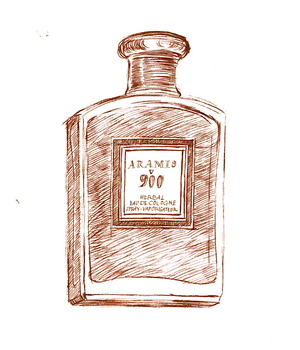
Aramis is one of those mid-market brands that seems to have been around for ever, and for that reason it’s often overlooked or, worse, looked down upon. Which is, I think, a shame, because there are some classic men’s perfumes in the range.
The all-men’s brand was launched in 1964 by Estée Lauder and her husband Joseph, with the eponymous Aramis (which I’ve reviewed here) as the first fragrance in the range. Though I’d always assumed the brand and the perfume were named after the character in The Three Musketeers, legend has it that it actually commemorates an obscure town in Armenia, which these days is transliterated as Yeremes. It sounds like a leg-pull, but then we’re also told that the Lauders were working with an Armenian designer at the time by the name of Arame Yeranyan, so you never know; I’ll let you know if I can get a definitive answer out of somebody.
Whatever the truth of the matter (and the perfume industry’s relationship with historical fact can sometimes be rather shaky), Aramis was a big success, and in 1973 it begat Aramis 900. Like the original Aramis it was created by Bernard Chant, a brilliant French perfumer who loved spicy, leathery fragrances, and it’s very much along those lines.
In fact, as it’s often been pointed out, if Aramis 900 hadn’t been marketed for men, it would have worked just as well as a woman’s scent – a good example of the obvious but too rarely grasped fact that in itself perfume has no gender. Just smell Clinique’s classic woman’s perfume, Aromatics Elixir, and you’ll see what I mean: it was also created by Bernard Chant and to many people smells identical to Aramis 900.
Aramis 900 is a deep, spicy, complicated scent, which makes most contemporary offerings smell weedy and washed-out by comparison. Today you’d only expect to find a men’s fragrance smelling this rich and complex in an expensive ‘exclusive’ range like Tom Ford or Armani Privée, but when it was launched it was aimed squarely at the middle market: these were not expensive perfumes.
Like the majority of other men’s perfumes, Aramis 900 includes lemon and bergamot, but among its more persistent and powerful ingredients are carnation, orris (iris) root, geranium, oakmoss, patchouli and vetiver, as well as rosewood oil, the natural form of which comes from an increasingly threatened rainforest tree, Dalbergia nigra.
Unlike most modern men’s perfumes, though, Aramis 900 has a predominantly floral scent, which to me smells like a mix of clove-scented carnation and old-fashioned rose. Though floral fragrances were popular with Victorian men, in 20th-century western culture they came to be thought of as ‘girly’, though for no particularly logical reason as far as I can see.
Luckily that didn’t stop perfumers from using floral ingredients in men’s perfumes, but in the case of Aramis 900 those flowery scents are brilliantly disguised by all sorts of other things, including a faintly ‘dirty’ smell that adds an oddly sexy extra to the mix. The forest-floor oakmoss and vetiver also stop it smelling sweet, while the carnation (despite being a flower) gives it the same kind of peppery spiciness that you can smell in Chanel’s Egoïste.
The amazing thing, to me, is that perfumes like Aramis 900 have been so cheap for so long, but in 2009 it seems to have dawned on Estée Lauder Inc what they had on their hands, and six perfumes in the Aramis range – including Aramis 900 – were relaunched and repackaged in matching bottles. Now priced at a less mass-market £60 and titled a ‘Gentleman’s Collection’, presumably the hope is that men who liked one fragrance might go on to collect the rest. Given the quality of most men’s fragrances today I’d say that wouldn’t be a bad idea.
Francis Kurkdjian
Absolue Pour le Matin
27 May, 2014
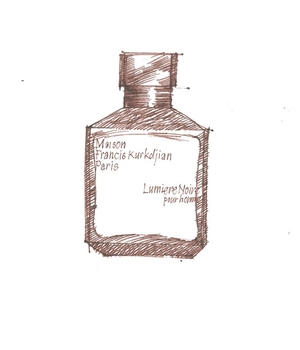
I feel particularly bad about this because the guys at Maison Francis Kurkdjian have very kindly given me four of his men’s perfumes: Lumière Noire, Absolue Pour le Matin, Amyris and Aqua Universalis. The bottles they come in are terrific: chunky glass cubes, narrowly faceted at each corner and more broadly faceted above and below, with a weighty zinc cap and discreet gold lettering in a sharp serif font – the zinc, apparently, being a nod to the distinctive zinc roofs of Parisian apartment blocks. Even the packaging, which lots of buyers simply throw away (not realising that keeping your perfume in its box preserves it from the degrading effects of light) is smart and carefully thought through: a box that sits within a thicker box, its interior printed gold.
All admirable stuff, admirably executed too. Which is why it’s such a big disappointment that the contents don’t live up to the packaging, for me at any rate. Take Absolue Pour le Matin, which is the one I like the best (or more accurately, dislike the least). It’s a fairly fresh, lemony fragrance, which also contains iris and lavender, but it has a cloying, rather chemical character that lasts, and lasts, and lasts and makes me feel faintly ill. If it was a more unusual and original scent I guess I wouldn’t mind so much, or for that matter if it cost rather less than £115 for 70ml, but hey, there we are.
Yet Francis Kurkdjian is obviously a perfumer of talent and imagination. His first big success came in 1995 when, at the age of just 25, he created Jean-Paul Gaultier’s first men’s fragrance, Le Male. Among his other successes are Armani Mania (2002) and Narcisco Rodriguez’ For Her (2003) and For Him (2007). They’ve all been big sellers, but – and perhaps this is the clue to why I’ve had such trouble with his own perfumes – I don’t like the smell of any of them. I’m not saying they’re bad: I’m just saying they’re not, for one reason or another, my style of fragrances, though they obviously appeal to lots of other people.
For now, though, I’m going to keep trying, and I might review the other Kurkdjian fragrances in a while. In the meantime I’m hoping he releases a new perfume that I absolutely love.
Angela Flanders
Artillery No. 4
10 March, 2014
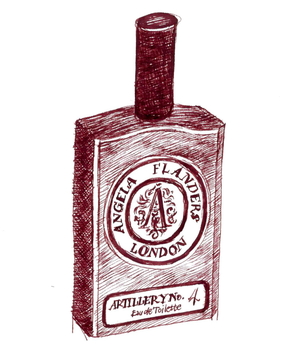 Picked up for a fiver in a Vogue House charity sale, entirely on the look of the bottle (you had to move fast), Artillery No. 4 turns out to be an unexpected treat. Launched in 2012, it was created by Angela Flanders, an English perfumer whose scents have an appealingly home-made quality which extends, in this case, to the label’s hand-written ‘4’.
Picked up for a fiver in a Vogue House charity sale, entirely on the look of the bottle (you had to move fast), Artillery No. 4 turns out to be an unexpected treat. Launched in 2012, it was created by Angela Flanders, an English perfumer whose scents have an appealingly home-made quality which extends, in this case, to the label’s hand-written ‘4’.
The name is a nod to the location of her shop in Artillery Passage, a splendidly Dickensian alleyway just east of the City of London. But it’s also a good choice for this particular perfume, as No. 4 has a whiff of gunpowder about it, or at least a hint of bonfire-night smoke.
It’s actually based around vetiver, the earthy-smelling tropical grass root that gives a bracingly bitter character to many classic men’s fragrances, but for once vetiver plays a fairly discreet background role. The first thing I smell, apart from that smokiness, is lavender (lots of it), another classic male scent – this is a very masculine fragrance. It’s spicy without being overpowering, with a gentle touch of orange provided by bergamot oil.
I like Artillery No. 4 a lot, though it’s not particularly long-lasting, which is unusual in a perfume that’s based on vetiver. It also comes in a simple yet attractive bottle, which is more than can be said for so many fragrances these days. How nice to stumble across a fragrance that deserves to be better known.